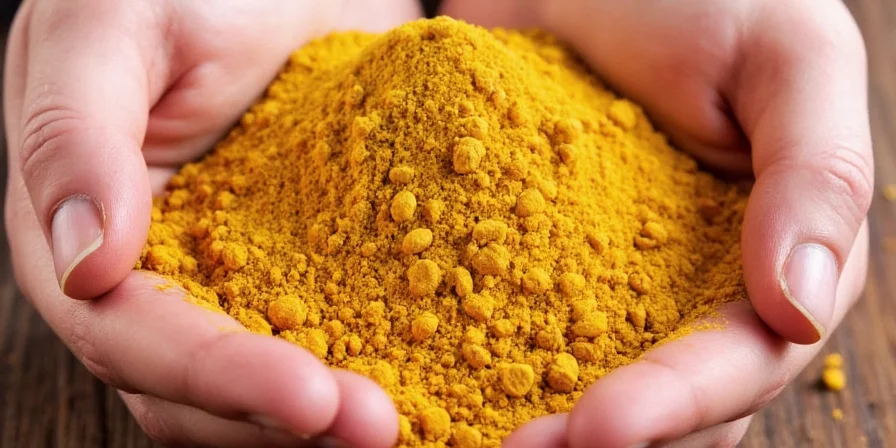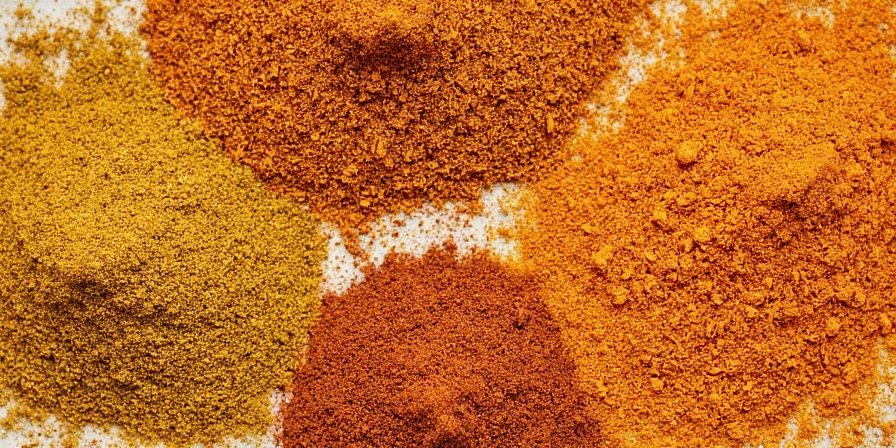Unlocking the Flavor Power of Curry Spice: A Comprehensive Guide

Curry spice is more than just a blend of exotic flavors — it's a cultural ambassador, a flavor enhancer, and a secret weapon in the kitchen. But if you're anything like the rest of us, you've probably opened a jar of curry spice, stared at it for a moment, and wondered, 'What now?' In this article, we're diving deep into the world of curry spice, covering everything from storage hacks to flavor-boosting techniques that will transform your cooking. So grab your apron, and let's spice things up!
What Exactly Is Curry Spice?
Curry spice is a blend of ground spices commonly used in South Asian cuisine. The name 'curry' itself is derived from the Tamil word 'kari,' meaning sauce or gravy. But the blend can vary widely, depending on the region and the dish it's intended for. While some curries are mild and sweet, others are fiery and bold. The key to using curry spice effectively is knowing what's in the mix and how to use it properly.
Common Ingredients in Curry Spice
| Spice | Role in Curry | Flavor Profile |
|---|---|---|
| Cumin | Provides a warm, earthy base | Earthy, nutty |
| Coriander | Adds a citrusy, slightly sweet note | Fresh, citrusy |
| Mustard seeds | Brings a pungent, slightly bitter kick | Sharp, peppery |
| Cardamom | Infuses a floral, sweet aroma | Floral, sweet |
| Cinnamon | Introduces warmth and sweetness | Warm, sweet |
As you can see, the blend is a symphony of flavors — and that's why it's so versatile. But to make the most of it, you need to store and use it correctly.
Curry Spice Storage Hacks: Keep It Fresh and Flavorful
Proper storage is the first step in maximizing the life and flavor of your curry spice. Let's walk through some essential storage tips to ensure your spice stays potent and aromatic for as long as possible.
1. Store in an Airtight Container
Exposure to air is the number one enemy of spices. Oxygen causes oxidation, which leads to flavor loss and even rancidity. Always store your curry spice in an airtight container made of glass or ceramic to keep the flavor locked in.
2. Keep It Cool and Dark
Heat and light are the next big threats. Spices stored in a warm, sunny kitchen will lose their potency much faster than those kept in a cool, dark place. The ideal storage location is a pantry or a spice drawer that is not directly exposed to sunlight or heat sources like the stove.
3. Avoid Moisture
Moisture is a major no-no for spice storage. Humidity can cause clumping and even mold growth. Make sure your spice jars are completely dry before storing, and avoid placing them near the sink or in a high-humidity area.
4. Use a Spice Keeper
If you're serious about spice storage, consider investing in a spice keeper — a specialized container designed to keep spices fresh for longer. These often come with airtight seals, moisture barriers, and even built-in measuring spoons, making them a kitchen essential for any spice lover.
5. Label and Date
It's easy to forget when you last opened a jar of curry spice. To avoid using old, stale spice, label each jar with the date it was opened and the type of spice. This simple step can save you from a lot of bland meals.
Curry Spice Usage Hacks: Elevate Your Cooking Game
Now that your curry spice is stored properly, let's talk about how to use it like a pro. Whether you're making a rich curry or a simple stir-fry, the right technique can make all the difference.
1. Toast the Spices Before Use
Many professional chefs and home cooks swear by toasting spices before using them. Toasting enhances the aroma and deepens the flavor of the spice. Simply heat a dry pan over medium heat and add the curry spice. Stir constantly for about 1-2 minutes until the aroma becomes more intense and the spices start to sizzle slightly.
2. Use the Right Amount
Curry spice is potent, so a little goes a long way. A general rule of thumb is to use about 1-2 teaspoons of curry spice per 1 cup of liquid or 1 pound of meat. However, this can vary depending on the type of curry and your personal taste. If you're unsure, start with a smaller amount and adjust as needed.
3. Add at the Right Time
Curry spice is a dry spice, so it should be added early in the cooking process to allow the flavors to develop fully. If you add it too late, the flavors may not have time to meld with the other ingredients. However, if you're using pre-made curry paste or powder, it's often best to add it after the base ingredients have been cooked down.
4. Experiment with Heat Levels
If you're looking to add some heat to your curry, consider adding a pinch of chili powder, cayenne pepper, or even fresh chilies. These can be added at the end of cooking for a more intense flavor. However, be careful — a little goes a long way!
5. Mix and Match with Other Spices
Curry spice is a blend, but that doesn't mean you can't mix it with other spices to create a custom blend. For example, adding a teaspoon of turmeric can enhance the color of the dish, while a bit of ginger can add a fresh, zesty note. Don't be afraid to experiment — the best curries are often the ones that are a bit different from the norm.
Curry Spice vs. Curry Paste: What's the Difference?
Curry spice and curry paste may seem similar, but they have distinct differences. Curry spice is a dry blend of ground spices, while curry paste is a wet mixture that includes ingredients like garlic, shallots, and chilies. Curry paste is often used in Thai and Indian curries, while curry spice is more common in Indian and South Asian dishes.
Here's a quick comparison to help you decide which one to use:
| Characteristic | Curry Spice | Curry Paste |
|---|---|---|
| Texture | Dry powder | Wet paste |
| Flavor | Earthy, warm | Spicy, pungent |
| Usage | Added early in cooking | Added during cooking |
| Shelf Life | 6-12 months | 3-6 months |
Choosing between curry spice and curry paste depends on the dish you're making and the flavor profile you're going for. Both are excellent, but they serve different purposes in the kitchen.
Flavor Enhancing Tips for Curry Spice
Now that we've covered storage and basic usage, let's dive into some advanced techniques that will take your curry spice game to the next level. These tips are perfect for those who want to elevate their cooking and impress their guests with a well-balanced, flavorful curry.
1. Use Fresh Ingredients
Curry spice is a dry spice, but it's still important to use fresh ingredients to enhance the flavor. Fresh vegetables, herbs, and proteins will add more depth and complexity to your dish. Don't be tempted to use old or stale ingredients — they can ruin the entire flavor profile.
2. Add a Touch of Acid
A small amount of acid, such as lemon juice or vinegar, can brighten the flavors of your curry and balance out the richness of the spice. This is especially useful in tomato-based curries, where the acid can cut through the fat and bring out the other flavors.
3. Use Coconut Milk for Creaminess
Coconut milk is a staple in many curry dishes, and it adds a creamy, rich texture that complements the bold flavors of curry spice. It also helps to mellow out the spice, making the dish more palatable for those who aren't used to strong flavors.
4. Garnish with Fresh Herbs
Adding fresh herbs like cilantro, parsley, or mint at the end of cooking can add a refreshing note to your curry. These herbs are often used in Indian and South Asian cuisine to balance out the heat and add a burst of freshness to the dish.
5. Try Different Cooking Techniques
Curry spice can be used in a variety of cooking techniques, including sautéing, roasting, and simmering. Each method brings out different flavors and aromas, so don't be afraid to experiment. For example, roasting the spices before using them can intensify their flavor, while sautéing them can add a smoky depth.
Common Mistakes to Avoid When Using Curry Spice
Even the most experienced cooks can make mistakes when using curry spice. Here are a few common pitfalls to watch out for:
- Using too much spice: Curry spice is potent, and too much can overwhelm the other flavors in the dish. Start with a small amount and adjust as needed.
- Adding it too late: Curry spice should be added early in the cooking process to allow the flavors to develop fully. Adding it too late can result in an underdeveloped flavor profile.
- Storing it improperly: Improper storage can lead to flavor loss and rancidity. Always store your curry spice in an airtight container in a cool, dark place.
- Using old spice: Old spice can be bland and lack the intensity of flavor that you're looking for. Always check the date on your spice jar before using it.
- Not adjusting the heat: Curry spice can vary in heat level, so be sure to adjust the amount of chili or other hot ingredients based on your personal preference and the dish you're making.
Conclusion: Mastering the Art of Curry Spice
Curry spice is a powerful ingredient that can transform your cooking and elevate your meals to new heights. However, to make the most of it, you need to store it properly and use it with care. By following these storage hacks and usage tips, you can ensure that your curry spice stays fresh, flavorful, and ready to use whenever you need it.
Whether you're a seasoned chef or a curious home cook, mastering the art of curry spice is a journey worth taking. With a little practice and a lot of experimentation, you'll be able to create dishes that are rich, complex, and full of flavor. So go ahead — spice things up and enjoy the journey!

Curry spice is more than just a blend of spices — it's a gateway to a world of flavor and culture. With the right storage and usage techniques, you can unlock its full potential and take your cooking to the next level.










 浙公网安备
33010002000092号
浙公网安备
33010002000092号 浙B2-20120091-4
浙B2-20120091-4